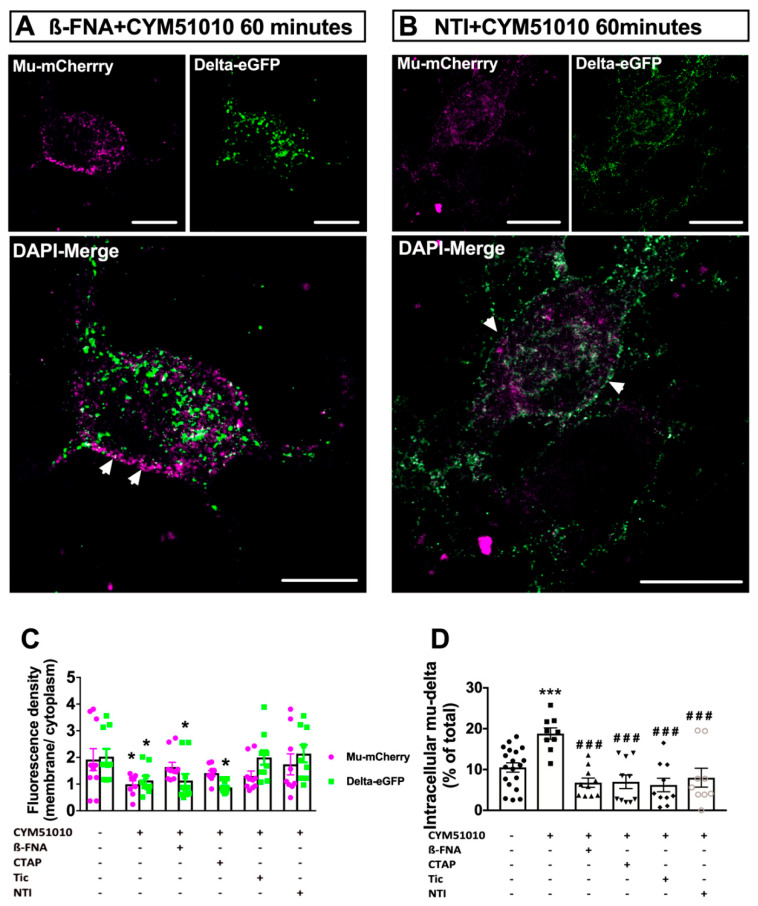Figure 4.
Antagonist pretreatment abolishes mu–delta opioid receptor co-internalization by CYM51010 in primary hippocampal cultures. (A) Representative confocal images showing mu-mCherry predominant localization at the plasma membrane and delta-eGFP extensive internalization after pretreatment with the mu antagonist β-FNA (200 nM) for 15 min, followed by incubation for 60 min with CYM51010 (400 nM). Scale bar = 10 μm. (B) Representative confocal images showing mu-mCherry and delta-eGFP predominant localization at the plasma membrane after pretreatment with delta antagonist naltrindole (200 nM) (NTI) for 15 min, followed by incubation for 60 min with CYM51010 (400 nM). Scale bar = 10 μm. (C) Pretreatment with the mu antagonists β-FNA or CTAP (200 nM) blocks mu-mCherry but not delta-eGFP internalization, whereas pretreatment with the delta antagonists naltrindole (NTI) and tic-deltorphin (tic) (200 nM) prevent internalization of both mu-mCherry and delta-eGFP. Receptor internalization is expressed as a ratio of membrane-associated versus intracellular fluorescence densities for each receptor. Two-way ANOVA F treatment (5, 104) = 4.73, p = 0.0001. Freceptor (1, 104) = 0.1, p = 0.84; Finteraction (5, 100) = 1.96; p = 0.0006. Multiple comparisons with Tukey’s post hoc test, * p = 0.04 basal vs. CYM51010 for mu-mCherry, * p = 0.04 basal vs. CYM51010, * p = 0.04 basal vs. β-FNA, * p = 0.04 basal vs. CTAP; n = 9–20 neurons per group from at least three independent cultures. (D) Mu-mCherry/delta-eGFP co-internalization is prevented by treatment with either mu or delta antagonists. Percentage of colocalized receptors in the cytoplasm after drug treatment. The fraction of cytoplasmic mu–delta heteromers is expressed as the percentage of mu-mCherry and delta-eGFP overlapping objects detected in vesicle-like structures 60 min after CYM51010 application. One-way ANOVA (p < 0.0001) followed by multiple-comparison Dunnett’s test. Significant differences after multiple comparisons tests are expressed as *** p < 0.001 when compared to basal group and ### p < 0.001 when compared to CYM51010 without antagonists; n = 9–20 neurons per group from at least three independent cultures.

